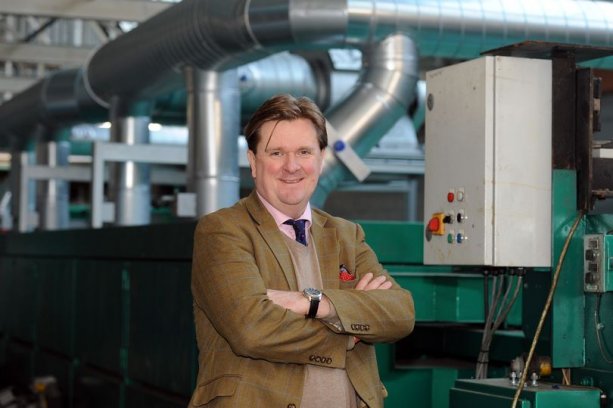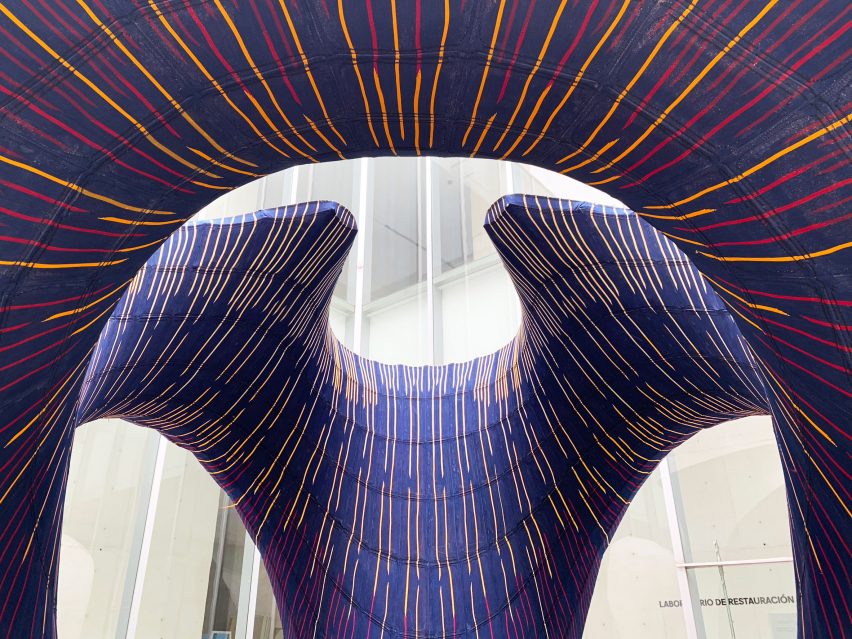
Bemis Associates debuts generation of liners at Techtextil
Charles Wood, Textile Institute Technical Textiles SIG chairman and managing director, Baltex.

7th February 2022
Innovation in Textiles
|
Manchester, United Kingdom
In introducing the Textile Institute’s revitalised Technical Textiles Special Interest Group (SIG) in the second in the series of ‘Tea with the TI’ webinars, Charles Wood, SIG chairman and managing director of spacer fabrics specialist Baltex, spoke of the current opportunities in the £2 billion UK technical textiles industry.
“This industry comprises a diverse base of companies ranged right across the UK who represent different areas such as textile machinery, fabric formation, textile coatings, confection and medical devices,” he said. “Close links with areas like composites, advanced coating and materials science are very prevalent in the UK, particularly with innovations like graphene, which was discovered in Manchester. In addition, the UK has some of the world’s leading universities for technical textile research and this provides a very firm technological base.”
He noted however, that the UK’s technical textiles sector was much smaller than that of Germany’s – worth an annual £22 billion following a nationwide drive over the last 20 years – suggesting plenty of opportunity for expansion.
“The 2020s are going to be a time of very significant change as we pull out of the pandemic and technical textile technologies will provide some of the key solutions to some of society’s biggest challenges, and particularly climate change,” Wood said. “At COP26 I was really inspired by a David Attenborough speech and his quote that we are after all the greatest problem solvers to have ever existed on Earth. I think this highlights the opportunities there are – technical textiles can play a part in actually halting carbon emissions, which is the target for this decade.”
He went on to cite examples from four fields in which technical textiles will be instrumental in making advances – construction, energy generation, electric vehicles and health monitoring.
Construction
Around 10% of the world’s carbon emissions are generated by construction, and the use of composite reinforcements in structures is already widespread. A major emerging field is that of textile-reinforced concrete
Researchers at the Technical University of Dresden, for example, have been working with architecture firm Henn to create the first concrete building to be reinforced with carbon fibres instead of steel – The Cube.

Carbon yarns are used to create a mesh that the concrete is poured onto and the resulting material is four times stronger than regular concrete, but also four times lighter, due to the reduced structural sections.
The carbon-fibre mesh is also rust-proof, unlike steel, meaning carbon concrete has a longer lifespan and can be much thinner since much of the thickness of steel-reinforced concrete is due to the need to prevent water penetration leading to oxidization of the rebar.
The Cube is a showpiece for a major TU Dresden research project called C³ – Carbon Concrete Composite, which is backed by the German Federal Ministry of Education and Research.
At ETH Zürich university in Switzerland, meanwhile, super-lightweight knitted formwork system has been developed by the Block Research to build anticlastic concrete shell structures much faster than traditional forming techniques. It comprises a self-supporting mesh of metal cables and aramid textiles onto which concrete is sprayed and is ideally suited to complexly-shaped construction projects.
The market for composites in construction is already estimated at $17.1 billion in 2020, growing to $24.2 billion by 2026, with an annual growth rate of 6% or higher.

Energy generation
Technical textiles are already embedded in the renewable energy sector with glass and carbon fibre extensively used in turbine blades and nacelles.
“Energy represents 27% of all emissions and we know that the move to renewables is going to accelerate over the next few years,” Wood said. “Interestingly, the US government has recently estimated that the fastest-growing job category in the country is that of solar power technician, closely followed by wind power technician. There are also recent developments using natural fibre composites in turbine blades or nacelles – one which has been produced in Germany by a company called Greenboats – and we’re going to see natural fibre composites coming much more to the fore.”
The new energy industry is going to be very diverse and one area the UK government is focusing on a lot is green hydrogen, he added.
“Technical textiles will play a key part in components, whether through pultrusion to manufacture cylinders or membrane technologies used in the production of green hydrogen, with other applications still to be developed and commercialised.”
Electric vehicles
Wood observed that a lot is happening in electric vehicles, in both components and battery technologies.

“We know that the 2020s will be a considerable time of disruption and many new companies and services will come into play,” he said. “It won’t be just the Teslas, Jaguar Land Rovers, Volkswagens and Hyundais who have already taken significant market shares. One notable new company is Arrival. It is based in London with around 700 employees and at the heart of its technology is a polypropylene and glass fabric in the production of exterior panels that are recyclable. Arrival is creating new pathways into this market for technical textiles.”
Remote health
Smart textiles which provide a greater feed of information for medical staff and better patient outcomes will be crucial to remote health monitoring – a market expected to grow to a value of $7.3 billion by 2028 from a base of $2 billion in 2020 – annual growth of 16%.
“Many major investors are now looking at this area and a new breed of super smart textiles which will be able to monitor body movements and remotely transmit the sensor signals while powering themselves by absorbing energy from movement, is arising,” Wood said. “We all know the pressure that the health sector is under and this technology, when ready, will be greeted very favourably.”
Categories
In summing up, Wood suggested that perhaps now is the time to revisit the 12 existing categories for technical textiles which were established back in 1988 by Messe Frankfurt, at the beginning of the Techtextil shows.
“It is probably time to look at these again and maybe redefine what technical textiles are,” he said. “A category like Ecotech, for example – as a single category covering a lot of ground – is probably no longer fit for purpose and identifying where the opportunities lie is critical for further progress.”

Business intelligence for the fibre, textiles and apparel industries: technologies, innovations, markets, investments, trade policy, sourcing, strategy...
Find out more